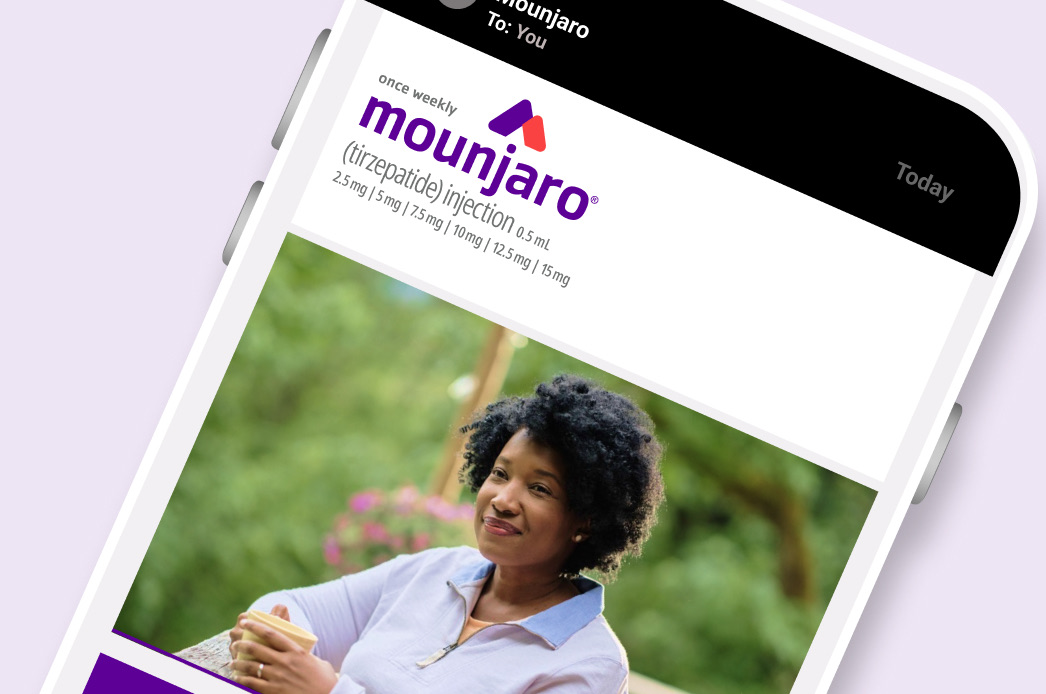
You're on a journey that goes beyond today
Sometimes the future looks bright. Sometimes it can be a little confusing. Get tips that could help you manage your type 2 diabetes moving forward.


Become an eggs-pert at meal prep
Freeze. Eat. Enjoy.
Be sure to speak with your healthcare provider before making changes to your diet and exercise. And remember to take any medications you've been prescribed exactly as directed.

Best meat & potatoes
breakfast cups
Freeze the individual cups after they're prepared for a grab-and-go breakfast that's perfect at home or in the office. To freeze most dishes, simply cool completely and pop into airtight containers.

Get moving—keep moving
No matter where you are with your fitness, it's possible you may be facing challenges. New to fitness? You may be finding it hard to get started. Already working out? You might be noticing that your motivation comes and goes. So, here a few ways to help you get and stay in gear.
Be sure to speak with your healthcare provider before making changes to your diet and exercise. And remember to take any medications you've been prescribed exactly as directed.

Interesting facts that may help manage your blood sugar
Be sure to speak with your healthcare provider before making changes to your diet and exercise. And remember to take any medications you've been prescribed exactly as directed.

Good morning, breakfast
Going without a morning meal can increase blood sugar during the day, including after lunch and dinner. So, try not to skip breakfast, it's an important meal!

Drink it in
Dehydration means less water in your body. And not drinking enough liquids can raise blood sugar. In fact, people living with diabetes get dehydrated more quickly. Drinking water is a great zero-calorie way to keep hydrated each day.

Getting real about goals
How you approach setting doctor-approved type 2 diabetes goals for eating and exercise can make all the difference in reaching them. It's important to be both specific and realistic about what you want to do. If your aim is to eat more vegetables, try starting with a smaller, more concrete goal, such as: I'm going to snack on cucumber sticks instead of potato chips 3 times a week.
Once you've set your goals, the next step is to make a plan for achieving them. Try using a diabetes management app on your phone or tablet. These apps let you track how you're doing over time and can help you feel like you're taking charge of your health.

Note to self: You can do this!
Once you've set realistic diet and fitness goals, keeping up with them for the next month or year can be a challenge. Writing things down can help.
- First, make sure you check with your healthcare provider about the specific lifestyle changes you want to make, the goals you have set or would like to set, and how to go about it
- You know yourself best, so think about things that can help you stay on track. Maybe it's creating a weekly meal plan or taking a walk around the block 3 times a week
- Making changes is a step-by-step process, that's where writing things down comes in. It doesn't matter if you use an app on your phone or pen and paper. Whatever works best for you is fine
Write down:
Your action plan. This is simply the ways you want to work on your lifestyle goals in the coming year. Set out goals for 3-, 6-, and 12-month check-ins.
Your thoughts. If you are feeling stuck, slip up on your action plan, have experienced successes, or if you are feeling an emotion you can't pinpoint, writing about it can help you identify patterns, determine what you're feeling, understand your strengths and challenges, and/or point toward possible solutions.
Positivity. Write a letter, note, or simply a Post-it to yourself. Write exactly those things that will make you smile and pick you up. Read your notes in the future and get an encouraging reminder to keep moving in the right direction.
Staying on top of your diet and fitness goals can help keep your blood sugar in check. But remember, changing habits takes time, so be patient with yourself.

Did you know, you can be the change?
You know diabetes. You've seen its impact on your family and your community—one generation after the next.
The good news is that the lifestyle changes you're making can help you—and your family. Here are some tips for passing along healthy habits to your loved ones:
- Make new traditions:
Your family looks up to you. By finding new, healthier family lifestyle choices you will help pass along habits that could help prevent type 2 diabetes - Play together:
Teach your children or grandchildren how fun movement is. Go for a nature walk. Play tag. Turn household chores into a game, like racing to see who can finish first - Share the facts:
Let your friends and loved ones know that what they do makes a difference. Healthy habits can help lower the risk of type 2 diabetes - Be a role model:
Did you know that children are more likely to eat fruits and vegetables if their parents do? Keep setting a healthy example. When you stay on track with nutrition and fitness, you're helping to inspire your children and their children to build healthy habits of their own
Important factors in managing your type 2 diabetes include any diabetes medications you may have been prescribed, what you eat and drink, and your physical activity. Before starting any new diet or exercise, always talk to a member of your diabetes care team—remember, they are there to help!









